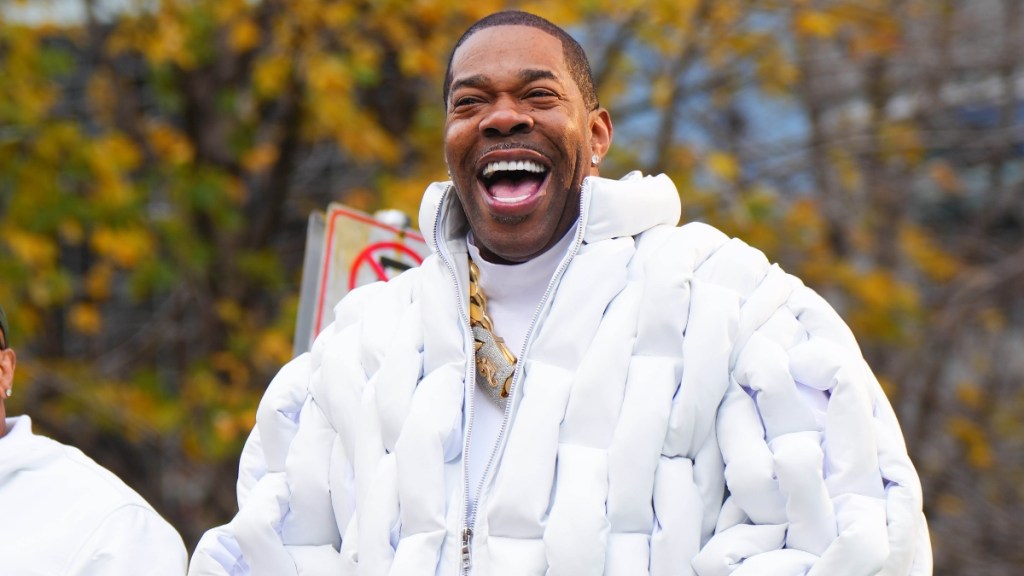A tank monument in Tiraspol, Transnistria. All photos by the author
“Yes,” she says, handing over a copy of the local paper, “’I like it here in Tiraspol,’” making quote marks in the air with her fingers. Then the young woman I’ve been interviewing shuts up—a van has pulled up, and a couple in suits have gotten out, and some unnamed threat is hanging in the air. Everyone on the street is staring at me and my guide, so we leave to catch the next bus out of Transnistria. I can’t help thinking that we’re getting out in the nick of time.
Videos by VICE
Tensions are running high in Transnistria—known locally as Pridnestrovie—a quasi-communist unrecognized state that straddles Moldova and Ukraine. On Wednesday, the day I arrived, it was reported that Russian soldiers had recently carried out military maneuvers there, sparking further speculation in the Western media that the region will be the next Crimea, another victim of Vladimir Putin’s sudden desire to put the Soviet Union back together.
There was a note of “The Russians are coming!” hysteria to some of the concerns about Transnistria being under attack, but they’re definitely not completely unfounded: Russia has more than 2,000 troops stationed in the region. General Philip Breedlove, NATO’s supreme allied commander in Europe, recently claimed that Russia is ready to “run” to Transnistria should the call be made, and this week Transnistria’s parliament sent a message to Moscow asking if their state could become part of Russia. The region, a narrow strip of land barely 15 miles wide but 100 miles long, has been more or less autonomous since the 1992 Transnistrian War, but it’s long had close ties to Russia—in 2006 a referendum showed that 97 percent of voters wanted to join Putin’s country.
But Eastern European politics are notoriously murky, and understanding Transnistria’s situation from afar seemed impossible, so I got on a bus and headed in.
Tiraspol is just a bumpy hour-and-a-half drive from Chisinau, Moldova’s decaying capital. It’s a flat, sprawling city of 130,000 that looks every bit the Soviet throwback—from tanks and battered trolleybuses to a statue of what looks like Lenin posing as Batman. The region’s green-and-red flag still bears the Hammer and Sickle, and the parliament building—a hideous deep-red lesson in Brutalist architecture—is called the Supreme Soviet. Tiraspol’s main street, Ulitsa 25 Oktober (a reference to Transnistria’s independence day), is a vast, vacant runway, the sidewalks of which barely anyone treads save for a few pensioners. The few cars that roll by demonstrate a gaping divide between haves and have-nots. Cheap GAZ vans and Lada four-doors brush sides with $100,000 Mercedes.
It’s a quiet but pleasant enough town on the surface. Open-air markets are thronged with old people selling everything from gas lamps to second-hand undies. Beyond the rows of old junk is a park containing a giant statue of Alexander Suvorov, the Russian who founded Tiraspol in 1792, and a billboard that, roughly translated, urges Tiraspolians to “Love Your City, Whatever!” A plastic yellow toy train carries kids along the banks of the Dniester River, which separates Transnistria from Moldova, the nation it officially belongs to. Young men smoke and throw fishing lines into the tideless water. There are two discos in town but, by and large, there’s not much to do in Tiraspol. (Not that there are many people of partying age here—senior citizens make up almost a third of the population.)
Though Transnistria is not recognized as a nation by any member of the UN, in truth it has long been forgotten by Moldova, itself a poor country still struggling to cope with the fall of the USSR. Transnistria was incorporated into Russia until the early 20th century, when it was deemed a part of Soviet Ukraine, later the Moldavian Soviet Socialst Republic. While Moldova remained agrarian and exported fruit, Transnistria became an industrial hub and attracted workers from the east who spoke Russian instead of the Romanian dialect of their neighbors.
Today those factories remain, providing Transnistria with the bulk of its proclaimed $1 billion GDP—though, in reality, Russia props up the Transnistrian economy by providing it with billions of dollars in subsides, including a scheme in which Russia buys gas for a Transnistrian company that then sells the gas and keeps the profit. According to the Warsaw-based Center for Eastern Studies, “Transnistria is almost completely devoid of any of the internal prerequisites necessary for economic growth.” The economy is controlled by the state, there are almost no small businesses, and a lack of good jobs has caused young people to emigrate en masse.
A statue of Lenin outside the Supreme Soviet, the headquarters of the Transnistrian parliament
And then there’s the smuggling. Once our bus crawled across the Transnistrian border and my documents were checked several times over, a small blue hatchback pulled up beside us, and the driver opened up our bus’s trunk and started pulling out cartons of fake Marlboros. “This happens every time,” said Vlad, my guide and fixer. Millions of counterfeit brand-name smokes get smuggled from Moldova into Transnistria, then down to the Black Sea via the Ukrainian city of Odessa.
But cigarettes are just the tip of the iceberg—human beings are trafficked along the same route by the thousands, and in 2011 Moldovan officials arrested six people, including two Transnistrians, for selling 2.2 pounds of enriched uranium to undercover cops posing as North African outlaws. (There was a similar incident in 2012.) There’s an estimated 30,000 tons of Soviet-era conventional munitions hidden within the region’s borders, and chances are a lot of that stuff is for sale.
“No one needs that sort of weaponry,” Moldova’s prime minister, Iurie Leanca, told me in Chisinau. “Of course it concerns us… Of course it makes us worried about what the future might hold.”
Since Crimea became part of Russia, Leanca hasn’t heard from Yevgeny Shevchuk, Transnistria’s president, despite repeated attempts to contact him. “It’s in everyone’s interest to keep stability, and not to allow the situation to degenerate,” he said. “We don’t need that.”
That sentiment wasn’t shared by ordinary people I spoke to in Tiraspol. At a covered market in the center of town I met Lyubov, a 60-something woman from Ukraine who sells apples she imports from the Caucasus. Kiev’s Euromaidan revolution was “the wrong way to do it,” she told me. She also believed that the Ukrainian revolutionaries were mainly right-wing nationalists, a narrative advanced by the Russian media. “We want Russia to come here and protect us from the fascists.” She seemed concerned that I’m an American. “We’re at war with them,” she said, while her husband looked anxiously from side to side.
In a small park crammed with Russian Orthodox monuments I spoke to Konstantin, who was assisting in the construction of a brick church. He told me he feels like Transnistria is “trapped in jail” between Moldova and Ukraine, and that Russian occupation would give him more freedom.
But it’s hard to get a straight answer in a place the watchdog group Freedom House describes succinctly as “not free.” When I met 58-year-old Fyodor Nikolaevic on the bus from Chisinau and asked to talk to him, he twisted his black handlebar moustache and looked about nervously. He used to dream of being a host on television, but today he runs a bus company that transports people between Moldova, Transnistria, and his home country of Ukraine. He’s been in Tiraspol meeting business partners and arranging new routes; according to him, not everyone is eager for Russian rule. “They’re sitting and waiting to see what happens,” he said. “But some of them really want to get into the European Union.” Fyodor himself is skeptical of an alliance with the West, especially in light of all the economic problems that have hit the EU. “Why would we want to go to Europe?” he asked. “The Greeks are broke, and even the Bulgarians don’t want to do it any more.”
Though Transnistria’s government and many of its people may want to become Russia’s latest acquisition, the Kremlin isn’t paying attention, or at least not outwardly—officially, Moscow doesn’t even recognize Transnistria’s independence from Moldova.
After a few hours of walking around talking to people, Vlad grabbed me by the shoulder. Time to go. The people have realized that I’m a journalist, not an innocent tourist, and we could be in a lot of trouble if we don’t reach the border. The state security apparatus has stepped its game up after Ukraine’s “fascist” coup; Transnistria even claims to have shot down a spy drone from Kiev this week. Foreign journalists asking about how much people here like the authorities are decidedly not welcome.
A nearly empty road in Transnistria
As we’re leaving we meet a young Moldovan soldier, Vasili, in the truck-stop town of Bendery. He works with the Russians as part of Transnistria’s tripartite military force, and he says they’re too preoccupied with Crimea to think about conflict in Transnistria. “Everything is calm,” he says, smiling.
But everything isn’t calm. Most pundits and most of the locals expect Russia to continue its push west. And while that push won’t likely reach Transnistria for a while, the consensus in Chisinau—and Tiraspol—is that it’s only a matter of time. As Fyodor bluntly put it, “We were expecting the Russians to take Crimea. Soon Ukraine will be cut in half; it’s only a matter of time. Crimea, Odessa. They won’t take Transnistria yet, though. Later.”
Follow Sean Williams on Twitter.
More
From VICE
-

Photo by Miriam Espacio on Pexe -

-

Images by WWE / Collage by Haley Miller -

XNY/Star Max/GC Images